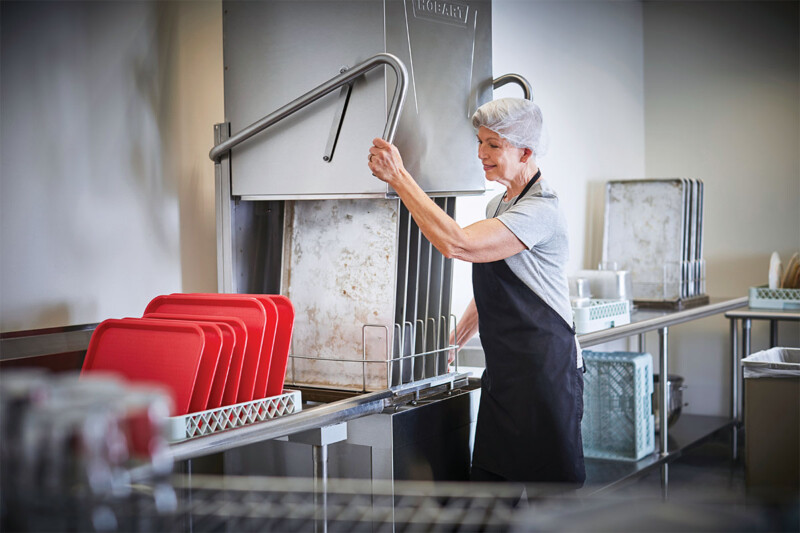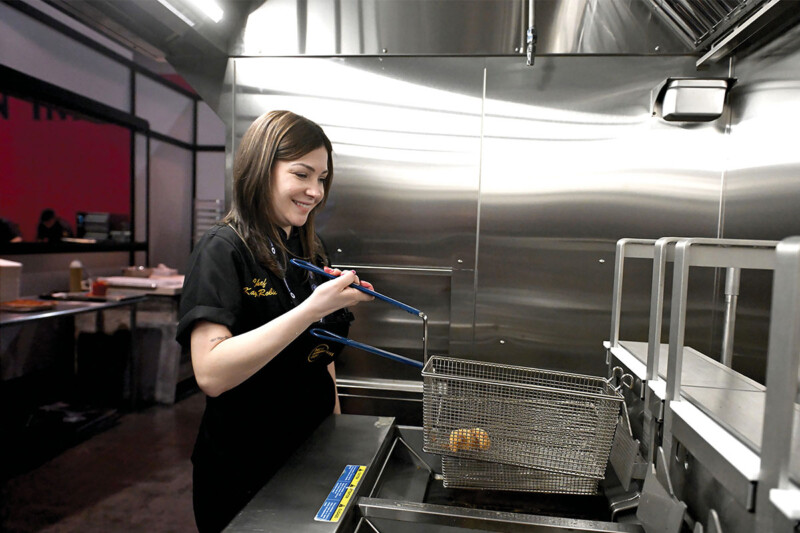Foodservice operators and manufacturers have a long-standing miscommunication about the proper use of food waste disposers. Whether it’s a kitchen crew tossing straws and wrappers into the unit or warehouse employees tossing packing tape down the drain, Jeremy Allen, V.P.- Operations at Indianapolis-based Vanco, has seen all kinds of misuse. “People don’t understand what can and can’t go down a food waste disposer,” Allen says, but the key words are “food waste.” Technicians see operators substituting disposers for trash cans all of the time.
One service call found Vanco providing a crash course on disposer-friendly waste. Responding to a warranty call from the dealer on a ¾-hp food waste disposer at a local restaurant, Vanco technicians set out to solve the malfunction mystery. “It was a brand-new unit,” Allen says. “We got called because it was vibrating, making clunking noises, and leaking.”
After a few service visits—during which nothing was found to be noticeably wrong with the unit—and installing a leg kit to manage the vibration that the operator insisted occurred regularly, the problems persisted.
On the next visit, a Vanco tech observed how the kitchen staff was using the disposer. The tech watched as the kitchen crew threw everything from paper plates, napkins, wrappers, plastic straws and other foreign debris into the unit. “The tech pulled multiple things out of this food waste disposer that shouldn’t have been in it.”
The restaurant manager was as unaware about how to use the equipment as the employees. When informed of the misuse, Allen says the manager protested, “‘It’s a commercial disposer; I should be able to put anything down there.’ Well, that’s not quite how it works.”
Industrial food waste disposers can take on a high volume of food scraps—but food only, and there are exceptions even to food scraps. “Disposers are pretty rugged, but not indestructible,” Allen says. The culprits in disposer malfunctions typically are very large bones; starches, such as potato skins (in large amounts all at once); and cornhusks and celery, which can go in but tend to slide through without getting ground up. These fibrous items can clog pipes, jam blades and tangle in the motor shaft. Chicken and pork bones and even some thinner beef bones can go down the disposer with no problem. They sound clunky going through, but they clear ground food that has collected in the unit.
Jamming situations can be avoided easily by educating the crew on the scrapping line. The main directive should be: “No paper, metal, plastic or glass down the disposer. Food only.” They should run cold water down the disposer for 30-40 seconds after the grinding sounds stops to clear debris.
The Vanco team explained to the restaurant owner what is acceptable and safe to put down the kitchen’s disposer, and the situation was resolved without the need for a new unit or future warranty calls.
Copyright FER January 2015
RELATED CONTENT
- Advertisement -
- Advertisement -
- Advertisement -
TRENDING NOW
- Advertisement -
- Advertisement -
- Advertisement -


